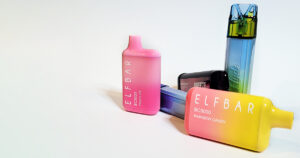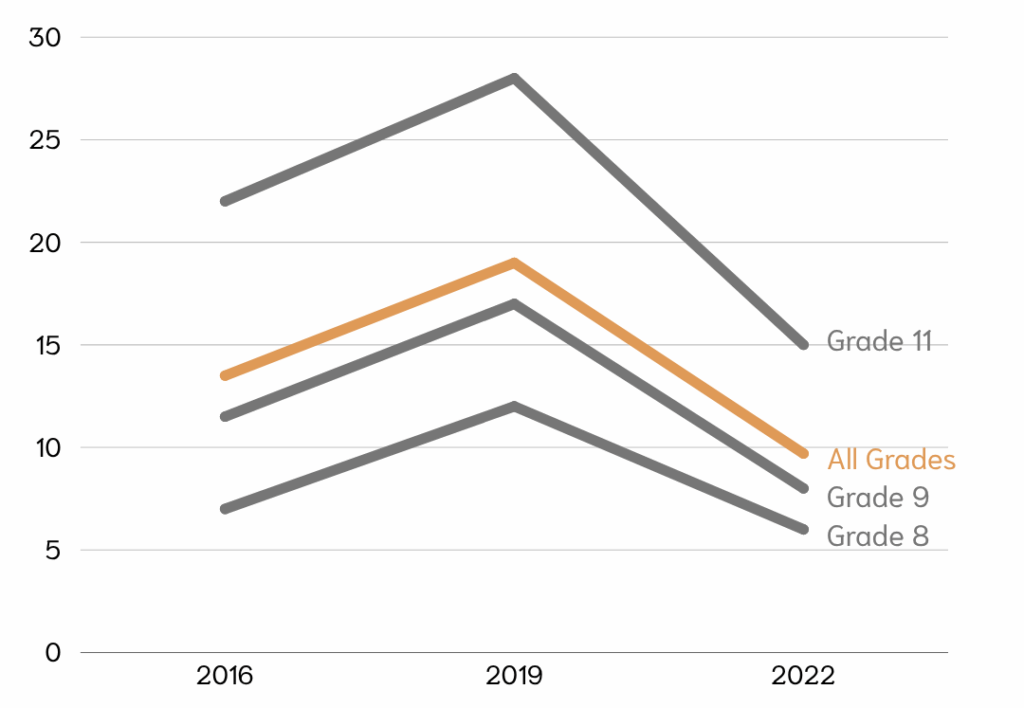TOBACCO & NICOTINE
Tobacco is a plant grown for its leaves, which are dried and fermented before being put in tobacco products. Tobacco contains nicotine, the highly addictive ingredient in tobacco that makes it so hard to quit. There are also many other potentially harmful chemicals found in tobacco or created by burning it. Those thousands of chemicals are what make tobacco use deadly. Serious health effects, such as fatal lung diseases and cancers, are associated with long-term use, and short-term use can cause coughing, shortness of breath, increased heart rate and blood pressure, fatigue, and other effects. Synthetic nicotine use has become more popular and is used in devices like vapes and pouches. Though marketed as safer because they are tobacco-free, synthetic nicotine products are still highly addictive and can cause serious harm, especially to adolescents as it impairs brain development and negatively impacts a youth’s memory, attention span, and ability to learn. Learn more from the U.S. Food & Drug Administration.
HEALTH IMPACTS
Treatment Methods
Resources
Common Delivery Methods
Vaping is the most popular nicotine delivery method for youth. Vapes (also be known as e-cigarettes, e-cigs, tanks, mods, etc.), are battery-operated devices that people use to inhale an aerosol which typically contains nicotine, flavorings, and other chemicals. They can resemble traditional tobacco cigarettes, cigars, pipes, or even everyday items like pens, USB memory sticks, smartphones, highlighters, and toys. There are even vapes with built-in digital games. Regardless of their design, appearance, and functions, vapes are increasingly dangerous for youth. Learn more about vaping.

Pouches are becoming another popular nicotine delivery method for youth. They contain a powder of nicotine, flavoring, and other chemicals, and are placed under the lip to be absorbed through the gums and lining of the mouth. Pouches entered the market in 2016, so scientists are still learning about the impact they have on health. What we know for sure is that nicotine, no matter how it’s absorbed, is highly addictive, can harm brain development, and can negatively impact mood, attention, and impulse control.
Learn more from the Centers of Disease Control and Prevention.
Local Youth Tobacco & Nicotine Use Trends
All data is from the 2013-2022 Minnesota Student Survey.
Tobacco/nicotine is one of the three most commonly used substances amongst Minnesota youth. On the upside, overall tobacco consumption has been decreasing over the past 10 years. In 2016, 13.5% of 8th, 9th, and 11th graders reported using tobacco in the last month. That decreased to 9.7% in 2022. However, that has been replaced by an immense increase in the number of students vaping cannabis.
Of those who used a tobacco product in the last month, 81% of 8th, 9th, and 11th graders reported that they used a flavored product. This is significant, as tobacco companies use flavors, such as candy or fruit, to make their product easier to consume and more attractive to youth.
Tobacco use is declining among Minnesota students in all grades

The Good News
90%
of Minnesota 8th, 9th, and 11th graders have not used any tobacco products in the past month
91%
of Minnesota 8th, 9th, and 11th graders have not vaped in the past month
85%
of Minnesota 5th graders have not been in a room with someone smoking cigarettes in the past week
99%
of Minnesota 5th graders have not used cigarettes, cigars, or smokeless tobacco in the past month
Preying on Youth
The tobacco industry, well-known for their predatory marketing tactics, continues to capitalize on their decades of experience to hook youth on tobacco and vaping.
Bold and Bright: How Tobacco Companies Market Flavored Products to Appeal to Youth – Truth Initiative
10 of Some of the Really Bad Things the Tobacco Industry Has Done – and is Doing – to Entice Kids to Start Smoking – American Lung Association
